WARNING: Winter jasmine/ jasminum nudiflorum
I picked up a couple of these on sale a few years ago for $2 a pop. They were advertised as being mounding, 3'x4-5'.
Really, they reach a maximum height of 3' and width of...indefinite! They are aggressive spreaders and will root any place an arching branch touches the ground. They scramble across flower beds.
They are gorgeous year-round. The smell of the winter-born yellow flowers in enchanting. They are best reserved for a slope where they can form a stunning groundcover with no other plants.
DO NOT plant these with other shrubs or with perennials.
Comments (35)
Embothrium
11 years agoNot I believe known elsewhere to be fragrant, including in my own experience. So I wonder if you are actually talking about something else, weeping forsythia perhaps.
reyesuela
Original Author11 years agoNope. Have weeping forsythia, too, which isn't exactly mannerly but can be contained.
It was by my mailbox, and I could only smell it on certain warm days in winter when it really perked up. It caught me by surprise the first time.
Winter jasmine blooms truly deep in the winter, 6 weeks or more before my forsythia. It loses all its leaves, but the arching branches stay green, and they are covered with these tiny yellow flowers that individually are pretty insignificant but together make quite a pleasing effect.
I have to admit that I've never noticed my forsythia smelling nice, but I'm RIGHT next to the winter jasmine in bloom and a good 4-6' minimum from the forsythia, typically. But the jasmine is rolling up the carpets by the time the forsythia begins.
Related Professionals
Erie Landscape Architects & Landscape Designers · Sahuarita Landscape Architects & Landscape Designers · Medford Landscape Contractors · Bainbridge Island Landscape Contractors · Hawthorne Landscape Contractors · St. Louis Landscape Contractors · Suitland Landscape Contractors · Hueytown Landscape Contractors · Raytown Landscape Contractors · Lake Forest Park Window Contractors · Pawtucket Driveway Installation & Maintenance · Aberdeen Decks, Patios & Outdoor Enclosures · Renton Decks, Patios & Outdoor Enclosures · Tomball Decks, Patios & Outdoor Enclosures · West Bend Decks, Patios & Outdoor Enclosuresbotann
11 years agoIt's not the $2 plant that's the problem. As Reyesuela says, it's the location. In the right location, it's just fine.
A lot of people can benefit by this warning. Thanks, Reyesuela.
MikeEmbothrium
11 years agoYes, I have been quite familiar with the plant for decades and now you are saying you can smell it only at certain times under certain conditions. At first you made it sound like it was a consistent feature.
Currently I have it draping a concrete wall.
flora_uk
11 years agoGot to say I've never noticed any smell from it either. Maybe we don't have sufficient winter sun to make it smell? It certainly looks good as a wall shrub where it can be kept under control.
reyesuela
Original Author11 years agoYeah, because when nurseries put a plant on clearance, they change to tag to make it inaccurate. *rolls eyes*
I noticed the scent frequently because I got so close to it! I'm not all that sure if it has a scent when there are enough blooms on the stems of if the temperature helps release it... But because of where it was, that was a big attraction for the plant. When there are only a few blooms, there's no scent to speak of. But when it's really going, it definitely turns my head.
gardengal48 (PNW Z8/9)
11 years agoI've always considered this to be an extremely ungainly shrub - hard to site and with no redeeming visual aspects outside of its limited winter bloom period. In milder zones, there are too many other winter blooming choices to make this high on the hit parade.
And while scent is a very subjective sense, it is interesting to note that virtually every source you locate will indicate that, unlike the rest of its genus, winter jasmine has NO fragrance.
reyesuela
Original Author11 years agoWeird. Maybe I have a freak! It definitely is scented for me. It's not like phlox or honeysuckle, that can knock your socks off from many feet away, but you notice it.
I really like the extremely deep green color in full sun. I like the weeping look. I love the very fine texture--it's really quite neat. I like the way it looks when the leaves drop even without the blooms. I think it's a GREAT shrub, year round--if only it wouldn't expand so aggressively!
If it's sited correctly, it maintains a VERY dense shape. It'll send up a few ungainly sprays that need pruning, but the density is quite remarkable overall, and so is the neatness of habit if you can rein it in naturally.
If I had a decent place for it, it'd still have a home in my yard. It took over so badly because I just didn't want to get rid of it.
flora_uk
11 years agoOh, come on gardengal48, give WJ a break! If well trained against a wall it is a glorious and welcome sight in mid Winter and in the Summer it just recedes quietly and unobtrusively into the background. It is seldom grown as a free-standing shrub over here and doesn't seem to be considered a problem at all.
Here is a link that might be useful: Winter Jasmine
gardengal48 (PNW Z8/9)
11 years agoSorry flora, but you're not gonna convince me that plant has a lot of great features :-) And I'd not consider it a problem per se.....at best, I'd consider it just an OK plant. To earn real estate in my or my clients' gardens, plants have to put forth an effort that rates them beyond the 'just OK'! No room for things to "recede quietly and unobtrusively".
btw, I also include any shrubby potentilla in this group as well. OK in flower but nothing very redeeming about it outside of the bloom period. And downright ugly in winter!!
flora_uk
11 years agoOh well - I clearly won't win this one! It must be what a person's used to. They are both widely used and loved here. WJ's habit of receding into plain green background makes it a perfect foil for fancy summer stuff. And as for Potentillas being ugly in winter, what is worse looking than a naked rose bush? Maybe they perform better in our climate? They flower from late spring right into autumn.
Embothrium
11 years agoShrubby potentilla is definitely worse looking during winter than a rose bush. Winter jasmine, on the other hand, has green young stems during winter, in addition to the flowers. And a habit with something going on - you'll never be able to drape a wall with a shrubby potentilla.
flora_uk
11 years agoWeird how you seem to hate them over there. They are really popular here. Easy, pest and disease free shrubs well suited to our tiny gardens. Must be the climate. Maybe your stronger sun fades them? Maybe your hotter summers cause watering troubles? They look no worse in winter than any other small deciduous shrub. But again that may be because we have very little snow to flatten them. I pass many on my walk to work and they are smothered in bloom at the moment and will be for months. Though I agree some of the supposedly pink or red/orange ones are sometimes disappointing the whites, yellows and creams look great to me. Similar in habit, appearance and usage to Cistus.
Here is a link that might be useful: Potentilla fruticosa
gardengal48 (PNW Z8/9)
11 years agoFlora, please don't misunderstand......they are very popular here as well, considering the large numbers we sell each year at the nursery. I just do not care for them at all, finding them to have minimal attraction when compared to all the other scads of smaller shrubs we can grow that have so many more features.
They may be similar in habit and usage to cistus but waaaay behind in appearance!! At least cistus is evergreen and has an attractive presence in winter :-)
Embothrium
11 years agoThe two of us responding here are writing from the Pacific Northwest, which is quite similar to Britain except for the precipitation not being so evenly distributed through the year. Shrubby potentilla often looks sodden and dead in winter, and like other small dense deciduous shrubs may collect debris that remains visible from the outside. Many cultivars also have issues with leaf rust and I think mites causing a noticeable diminishment of the foliage appearance in summer. It's yet another example of how things tend to be balanced with plants, for the long May to October bloom you get from this shrub you have to pay with it often looking utterly like it has died during the entire winter. Because of this I have seen it recommended that it be tucked in among evergreen shrubs and not planted in masses. A mistake seen repeatedly here is to place prominent groupings of them in conspicuous locations like entryways, which these then blight for months with their dormant season shabbiness.
flora_uk
11 years agoThat is interesting bboy - as far as I know they don't get any pests or diseases to speak of here. And since the commonest style here is fairly dense mixed plantings of shrubs,perennial,trees and annuals they are pretty easy to minimise in the winter. Don't get the impression I am an aficionado, I was just surprised at the vehemence of the anti Potentilla feeling.
denninmi
11 years agoI guess I can add a somewhat different perspective, coming from a cold winter climate. Basically, most people here just don't care what things look like in the winter, because for up to five months of the year, their either covered in snow, or most years, even if not, its so cold out no one pauses to look at them anyway.
Embothrium
11 years agoThe plants are usually pest and disease free although some may be subject to powdery mildew in hot dry
conditions. Red spider mite occasionally attacks some plantsHere is a link that might be useful: RHS Shrubby Potentilla Bulletin
flora_uk
11 years agobboy - I did say no pests and diseases 'to speak of' which to me is equivalent to 'usually pest and disease free'. Just seems to be a question of horses for courses.
Embothrium
11 years agoI see mildew pretty on them often here, they said "some" to indicate it depends on the cultivar. Same as with roses etc. This area has good conditions for mildew during summer, when the soil has dried out and fogs or dews are occurring.
woodyoak zone 5 southern Ont., Canada
11 years agoI think the PNW different conditions are a big factor in attitude to certain plants. Like denninmi, I'm in a colder area and I love my potetillas! As denninmi says, most winters they are buried in snow and bare deciduous shrubs are just not something that bothers me because they are just a normal part of the 'off season' life of the plants - and garden.
One thing that struck me as a possible reason for the difference in attiude to winter jasmine, based on the picture Flora posted, is that there are a lot more of those lovely brick and stone walls over there than there are on this continent. Things that show nicely against that sort of background can look quite different against a wooden fence I think
jillca
10 years agoIn looking at everyones posting - you are all in warmer more temperate climates than I am here in Denver, the shrub blooms in June. and yes will root everywhere. I dig up the expanding root system every 3-4 years and cut it back by half. It is mostly evergreen, but never have I seen any winter blooms Started with a 3 inch pot - plant is now about 4 feet by 5 feet. It is on the south side of my garden so only one side up against a side walk
floral_uk z.8/9 SW UK
10 years agoJillca - if your plant is evergreen and flowers June then it can't be Jasminum nudiflorum ie Winter Jasmine. The name says it all. If you post a picture we could id it for you.
stimpy926
10 years agoJasminum nudiflorum can be good for a high wall as at Scott Arboretum in Swarthmore,Pa
{{gwi:252686}}
monarda_gw
10 years agoI love winter jasmine because it blooms whenever there is a warm day in winter, including January. It is not fragrant, as far as I know. I think it is more graceful, if less spectacular, than forsythia and prettier when out of bloom because of the green stems.
I like potentilla, too, but it has begun to succumb to a fungal disease in the two gardens (belonging to friends) where I planted it. I like the primrose yellow one especially. But I don't see it for sale anymore. Maybe the ones in the nurseries got fungus also. So sad.
llewis62
8 years agoI must say that I have developed a great distaste for winter jasmine! My husband planted it in on a rocky bank hoping it would spread and cover the bank. Unfortunately, it also grows up the bank into my well manicured gardens. It is very difficult to keep under control! Anyone have any suggestions to keep it out of my garden without completely ripping it all out?
sam_md
7 years agolast modified: 7 years ago
Here is winter jasmine in median strip. This morning I risked life & limb to cross the busy highway to smell the flowers, nothing! This is one tough shrub, think of all the salt it gets from the road. Think how it must bake in July & August. I don't grow it but seems like it would respond well if you cut it back right after blooming if its too huge. The median strip seems to suit it well.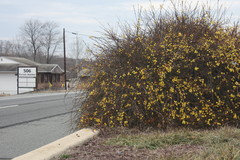
.gardengal48 (PNW Z8/9)
7 years agoThat last photo is all the justification I need for never including winter jasmine in one of my gardens............I do not find that to be even slightly attractive, blooming in the middle of winter or not!! Doesn't seem to be all that popular here either, as I rarely see it planted in local gardens and we carry and sell very little of it at the nursery.
There are good many other winter bloomers for this area that I much prefer and several recognized with an obvious fragrance - mahonia, sarcococca, skimmia, witch hazel and winter daphne for example.
Certainly winter attraction is going to be a bigger factor in milder, less snow-prone areas of the country (like zone 7 and above) than it would be in colder areas buried in snow for months on end and deciduous bare stemmed refuse collectors like the potentilla, Japanese barberry and smaller spireas just don't often make the cut. Unless combined with evergreens, as noted.
Mike McGarvey
7 years agoThe OP is gardens in New Mexico at 6,600 ft. The Jasmine might be alright there, but I wouldn't consider putting it in my garden. It just wouldn't fit. I think it would be hard to keep the weeds out in our climate.
By the way, this is an old post beginning in 2012. Still interesting though.
Embothrium
7 years agolast modified: 7 years agoUnique and attractive kept pruned to have an open structure and trained to cascade from a wall of adequate size. This is an entirely different effect from it growing as a large hummock in a median.
Just about any other kind of plant used as a climber in gardens will become overwhelming, produce a mess if the space or support used is too small. And any pruning and training required to maintain the desired appearance is not kept up with. Plants displaying a climbing or rambling mode of growth becoming a mound or pile when no support is present is also a shared characteristic not peculiar to the jasmine.
davidrt28 (zone 7)
7 years agoI think Sam_MD's pictures are from MD. In Virginia, along I-66, I seem to recall there used to be some plantings cascading in the way Embo recommends as superior.
Logan L Johnson
7 years agoThey are blooming here and have been since january. Not very attractive in my opinion, but I have never seen it cause problems.
monarda_gw
7 years agolast modified: 7 years ago"That most ordinary but delightful and dependable of climbers, Jasminum nudiflorum" (Winter Jasmine) was included on list of indispensable plants of famed gardener and adviser to the National Trust, Graham Stewart Thomas . Mary Keen writes: "Everyone can grow winter jasmine, with its yellow stars on wands of green, at the coldest time of year. It will flower in shade or sun, north or south, wet or dry. It is a plant I could not live without and I am glad it can hold its own with all the shrubs that Thomas must have grown and seen."
monarda_gw
7 years agoThomas extolled the Winter Jasmine in his 1957 book, Color in the Winter Garden, illustrated by himself.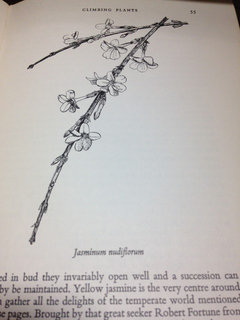
"...a place should be kept for the yellow winter jasmine, Jasminum nudiflorum. This plant is among the first half-dozen I would put in any garden, if for no other reason than that it provides flowers for the house from October to April regularly and abundantly. Picked in bud they invariably open well and a succession can thereby be maintained. Yellow jasmine is the very centre around which gather all the delights of the temperate world mentioned in these pages. Brought by that great seeker Robert Fortune from China in 1844, it has increased in popularity until it is the most commonly planted of all our winter shrubs. It seems to thrive anywhere, but the longest and best shoots come from a cool north wall. As many as possible of these should be left on the plant; they will provide the best future-flowering shoots and do not look so well in the house as the twiggy, branching pieces. The removal of the latter will provide ideal pruning."
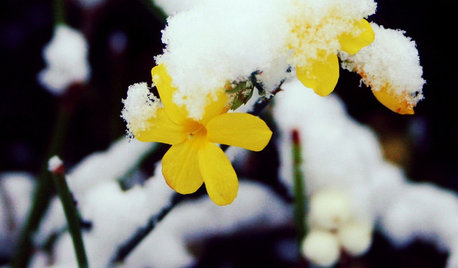
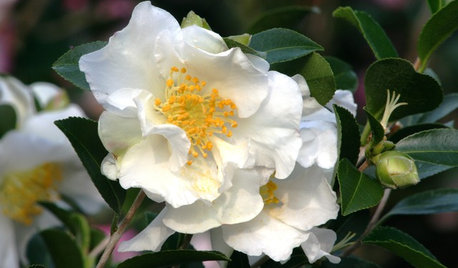
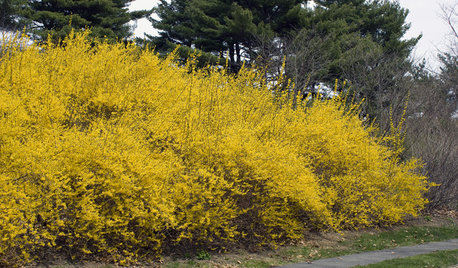
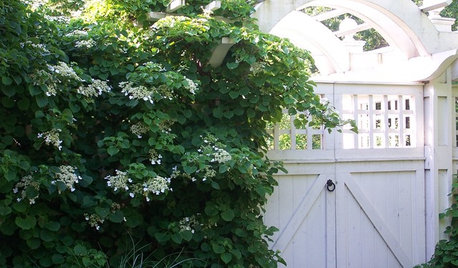
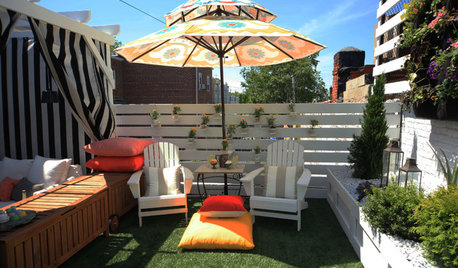






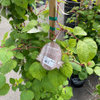
ken_adrian Adrian MI cold Z5